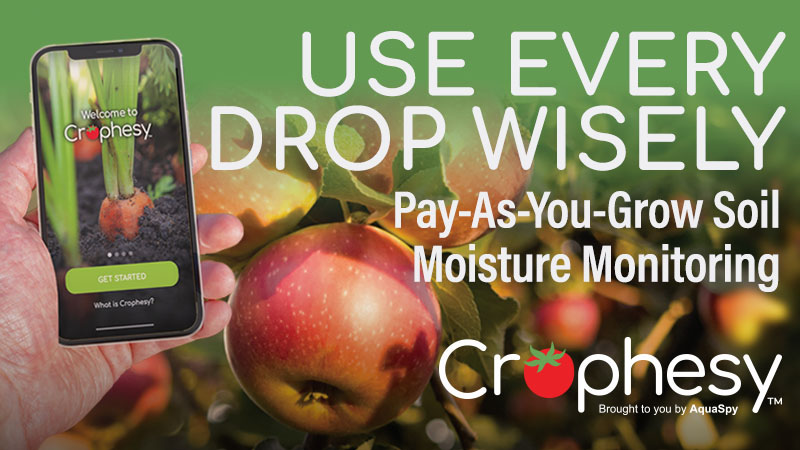Studies Lend Insight into Food Safety in Cantaloupes
New work by U.S. researchers advances efforts to reduce Listeria impacts on cantaloupe in cold storage. And that’s not all.
Check out three recent studies that tackle different angles of this topic.
Laying the Groundwork for Effective Listeria Treatments for Stored Cut Cantaloupe
A team from USDA ARS and the University of Maryland compared both Listeria and natural bacteria growth on fresh-cut cantaloupe and romaine lettuce stored at refrigerated temps (39°F) as well as abusive temperatures ranging from 50°F to 75°F.
“Fresh-cut cantaloupe provided favorable conditions for Listeria proliferation to overtake indigenous bacteria.”
They further noted that Listeria thrived in both refrigerated and abusive temps, though it grew at a faster rate with higher temperatures.
The team found Listeria also grew on romaine, but at much lower rates.
They also noticed that cantaloupe had much less microbial diversity than romaine. Before storage, cantaloupe starts out with more diverse bacteria, whereas romaine mostly maintains the diversity it begins with.
Importantly, the team identified bacteria species, including Leuconostoc and Weissella spp., which were present when Listeria count was low, making them worth further study as anti-Listeria microbes.
Authors: Ganyu Gu, Brenda Kroft, Marina Lichtenwald, Yaguang Luo, Patricia Millner, Jitendra Patel, Xiangwu Nou
Combined Inoculants Reduce Listeria and Spoilage
A couple different compounds have a track record for reducing Listeria loads on cantaloupe rinds. A team from Louisiana State University compared how a freeze-dried power version of those bacteria — nisin (NBP) and pediocin (PBP) — performed individually against a combination of the two.
In short, the combination reduced Listeria significantly more than NBP or PBP alone.
The team inoculated the cantaloupe and tested results over 16 days of refrigerated storage (at 39°F).
It’s important to note the team used a non-pathogenic version of Listeria, Listeria innocua NRRL B-33016, as a surrogate of the more dangerous L. monocytogenes. Also, all three treatments (NBP, PBP, and the two combined) reduced yeast and mold counts, which in turn decreased spoilage.
“These results suggested that freeze-dried bacteriocin-containing powders did not significantly affect the cantaloupes’ quality parameters after 16 days of refrigerated storage,” the study authors concluded.
Authors: Alvaro Garcia, Franklin Bonilla, Elio Villasmil, Vondel Reyes, Subramaniam Sathivel
What Is the Best Method for Switching from a Cover Crop to Cantaloupe?
While it’s universally acknowledged that cover crop systems help improve production fields, there’s a lot of fine-tuning needed to understand how to gain the most benefits.
A team from USDA ARS National Soil Dynamics Laboratory in Auburn, AL, conducted a three-year study on how and when to terminate a cover crop for the best effect.
It compared three different cover crops — crimson clover (Trifolium incarnatum, L.), cereal rye, and hairy vetch (Vicia villosa, L.) — with different kill methods. The kill methods included flail mowing (used as the control), a two-stage roller-crimper, and a powered roller-crimper.
The team measured the dry biomass produced by each cover crop, green/live matter after termination (via a light sensor measuring chlorophyll levels/greenness), as well as cantaloupe yield and weight. They used a no-till method of transplanting the crop for each.
“Termination rates for all cover crops by the flail mower were higher compared to the roller-crimpers at one and two weeks after rolling,” the team concluded. “Three weeks after rolling, there were no differences by termination methods for rye. However, for hairy vetch and clover, higher termination rates were noticed using flail mowing.”
Cover crop termination methods did not impact cantaloupe yield. The type of cover crop, however, had a significant effect on cantaloupe yield and fruit number.
“Based on these results, the highest yield was produced with a cereal rye cover crop and the lowest was with crimson clover. However, weather effects and inadequate cover crop termination for crimson clover contributed to reduced yields in cantaloupe production,” they noted.
Study: Effectiveness of Cover Crop Termination Methods on No-Till Cantaloupe (2021)
Authors: Ted S. Kornecki and Corey M. Kichler









